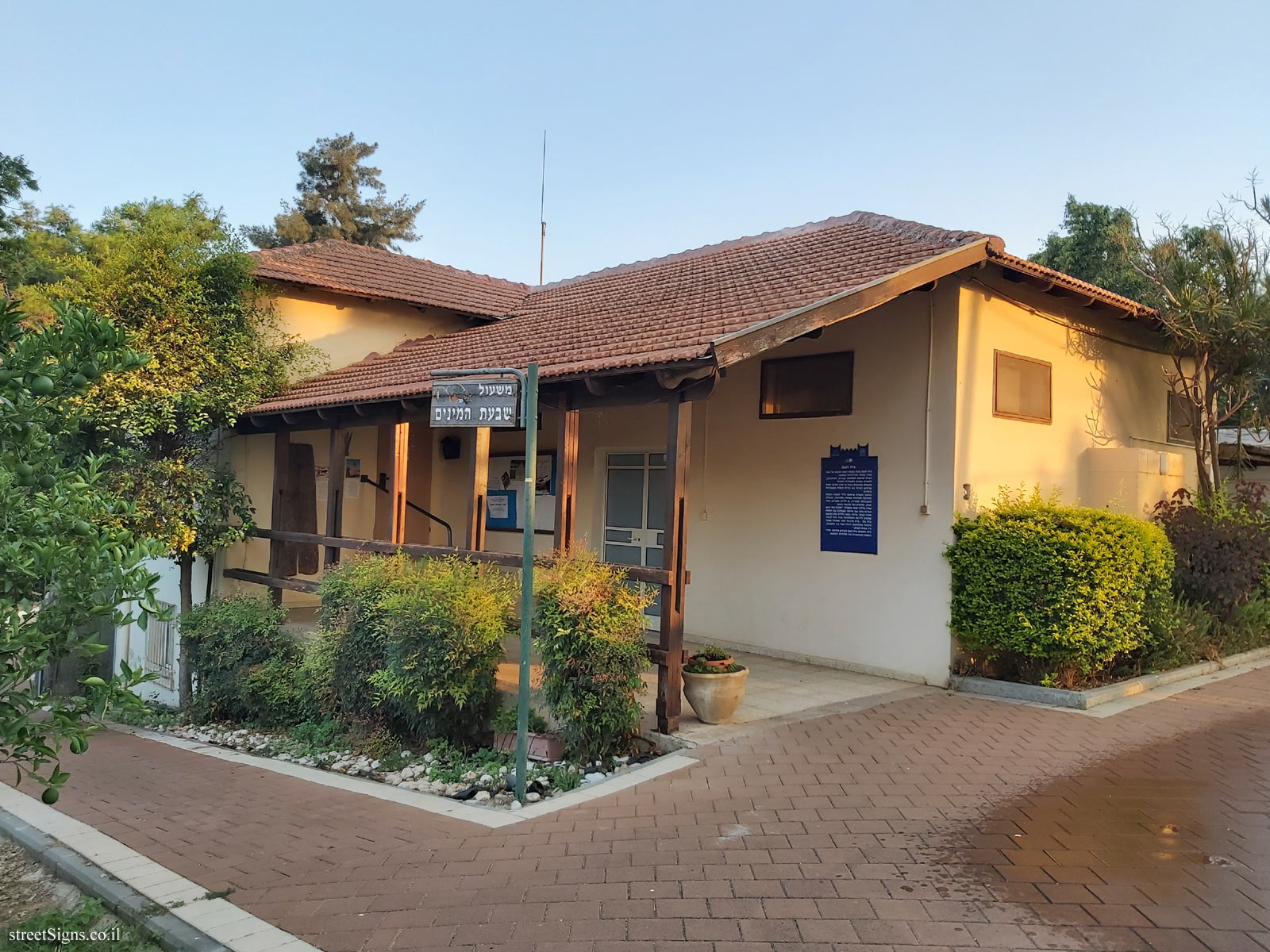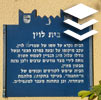The sign shape is square but its head is designed according to the silhouette of the old building of the Gymnasia Herzliya, which serves as a logo of the Council for the Preservation of Heritage Sites in Israel
The People’s House was photographed that day
 Click for a larger image Translation of the text on the sign
Click for a larger image Translation of the text on the sign:
Symbol of the Council for the Preservation of Israeli Heritage Sites
Emblem of Moshav Gan Haim
The emblem of the Ministry of Culture and Sport
The House of the People The People’s House was built in 1947 and is named after Tanya Kantor, one of the founders of the moshav.
The house was used for friend gatherings, events, various classes and cultural activities.
In the 1960s, an ark was built there and since then the house has also served as a synagogue on Saturdays and holidays.
Over the years, the annex rooms and the basement floor have been used for various purposes: secretariat, bookkeeping, library, kindergarten, residence, armory, and club of the youth movement.
Sara Balila-Yitzhar says: "The inauguration of Beit Ha’am was held in large numbers and was combined with the wedding of Monia Kantor.
I blessed on behalf of the children the moshav that had reached the level of development and could build a house with - a beautiful house of culture. I said I hoped the place would be a bridge between hearts, fathers and sons. "
Today, Beit Ha’am serves as a museum archive and the annex rooms are used by the moshav secretariat.

 Click for a larger image
Click for a larger image  Click for all signs belonging to Heritage Sites in Israel
Click for all signs belonging to Heritage Sites in Israel
 2.29 Km |
2.29 Km |  2.3 Km |
2.3 Km |  2.3 Km |
2.3 Km |  2.31 Km |
2.31 Km |  2.37 Km
2.37 Km